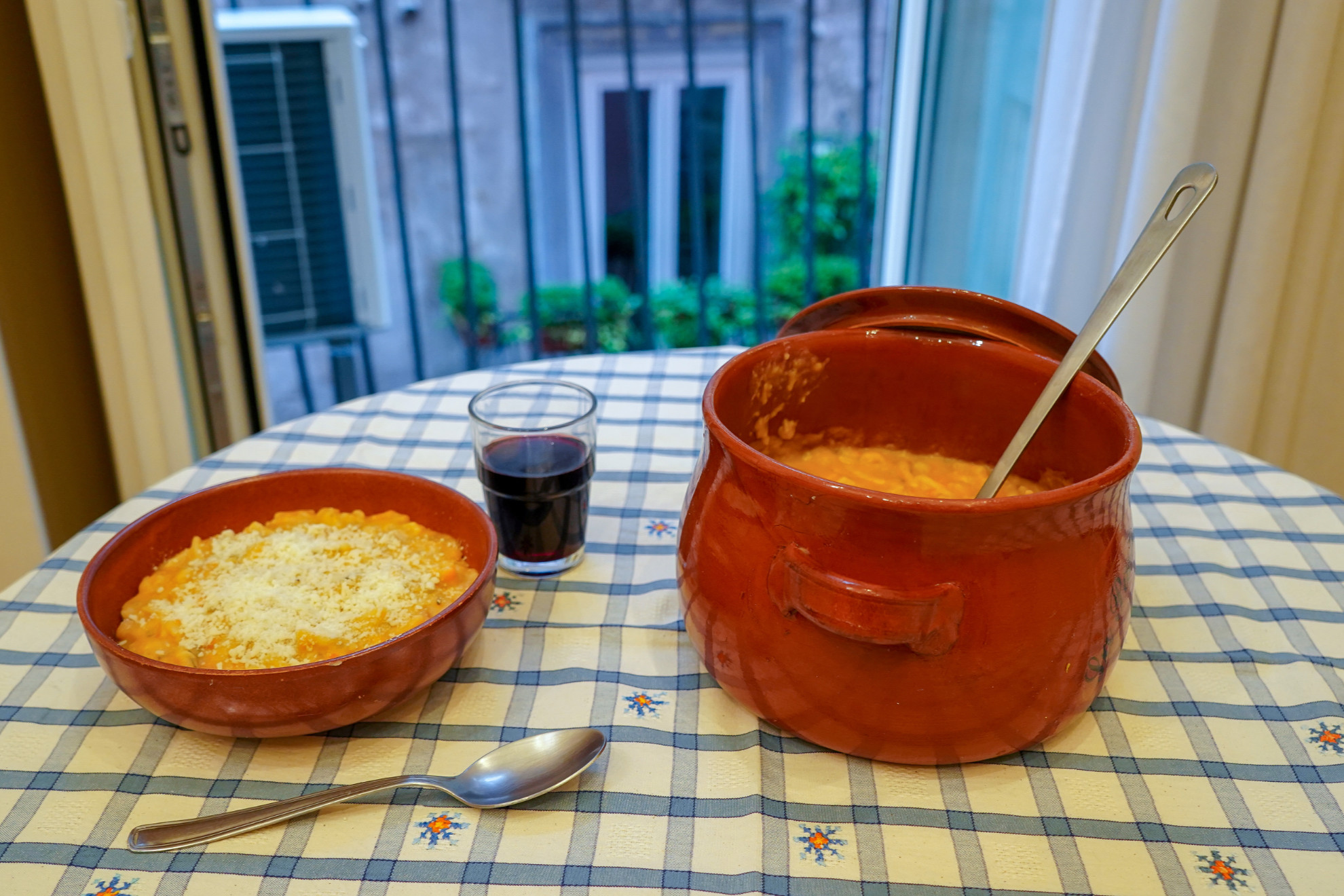Do two starches, put together, have to fight? In cooking schools it is often taught that it is a mistake to marry two ingredients that carry too many complex carbohydrates in large quantities, difficult to digest.
Ph. Enrico Nocera

But exceptions - tradition teaches us - are always around the corner. Especially if, in the past, you had to think about eating without too many frills and without giving up something good for the palate.
Pasta and potatoes is now widespread throughout Italy, but this dish was certainly born in the alleys and warehouses of Naples. Its first historical evidence is given by Vincenzo Cuoco in his “Cuoco Galante” of 1773. However, the recipe had spread to Neapolitan homes at least a century earlier, in the 1600s, when it was discovered that the strange tuber imported from America - the potato - was easy to grow even in the mild and sunny climate of Southern Italy.
“Good encounters took place going overseas: the potato of America found the olive oil and the tomato went to the wheat”Erri De Luca
As usual in Neapolitan cuisine, it starts with a base of sautéed: oil, onion, celery and carrots, and in the end the peeled potatoes, washed and cut into small pieces, with one or two ladles of water. A secret, well known in the houses where the recipe was born, is to use yellow potatoes, with compact and not very floury pulp, perfect for boiling.
And here's the stroke of genius! The intuition that transforms a popular dish, already tasty in itself, into a delight for demanding palates: the provola cheese (a typical Neapolitan smoked dairy product). The introduction of the cheese is relatively recent, since neither the seventeenth-century tradition, nor the recipe handed down by Corrado, spoke of it. Provola is usually added at the end of cooking. It is cut into small cubes and left to melt in the potato and pasta mixture, so that it reaches a stringy and creamy consistency. Then a sprinkle of Parmesan, and the dish is ready.
Ph. Enrico Nocera

Over time, provola - from bold experimentation - has become a solid tradition. Hearing about pasta and potatoes, a true Neapolitan’s thoughts go to the tasty dairy product produced in the Lattari Mountains, towards the Sorrento Peninsula.
At the same time, some dares a further step forward: sprinkle the dish with a little breadcrumbs and brown it for a few minutes in the oven, so as to obtain an almost crunchy texture on the surface.
There are many variations on the original, starting from two different schools of thought: those who want it a little more soupy, almost like a soup; who, on the other hand, prefers the more solid and creamy version, in which provola is the protagonist.
Ph. Enrico Nocera

And what about pasta? Here, too, the concept of cooking without wasting triumphs. Mixed pasta is almost a must, as it takes up the ancient concept for which food is never thrown away. In fact, the Neapolitans used to collect the remains of the pasta left in the pantry, without paying too much attention to cooking times and shapes, and mix them with potatoes. The triumphs of cooking that wastes nothing and still crates dishes loved by every foodie.

